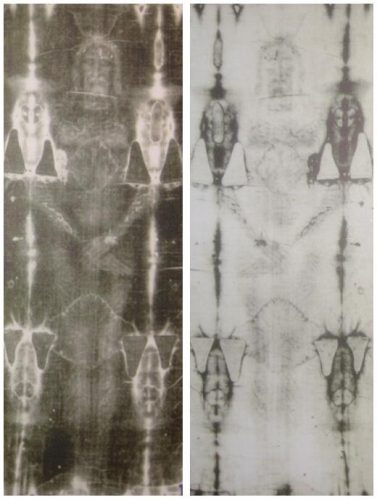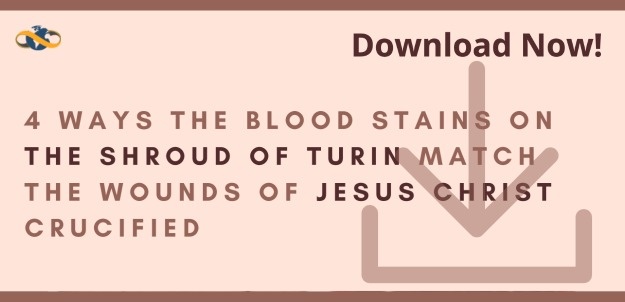The Shroud of Turin is a linen burial cloth woven in a distinctive 3:1 herringbone pattern. Spanning approximately 14 feet 3 inches in length and 3 feet 7 inches in width, this single piece of cloth features detailed front and back images of a man who appears to have been crucified.
A Journey Through Time with the Shroud of Turin
Venerated as the burial shroud of Jesus Christ, the Shroud of Turin first gained public attention in 1355 when it was showcased in Lirey, France. Its significance has drawn large crowds and even led to the creation of souvenir medallions, one of which is now housed at the Cluny Museum in Paris.
The Shroud of Turin Undergoes Unprecedented Scientific Scrutiny
No other relic has been subjected to as much scientific investigation as the Shroud of Turin. These studies aim to uncover the origins of the cloth and the enigmatic nature of the images it bears.
Key Features of the Shroud of Turin
- The Image: The Shroud bears a faint sepia outline of a crucified man, complete with dark brown stains that contain confirmed AB blood particles. The anatomical details align closely with the scourging and crucifixion descriptions in the Gospels.

- Facial Details: The image reveals a man with a beard, mustache, and shoulder-length hair parted in the middle. Estimates of his height range between 5 feet 7 inches and 6 feet 2 inches. Notably, close examination of photographic negatives has shown coins placed over the man's eyes.
Breakthrough Scientific Discoveries Regarding the Shroud of Turin
Scientific exploration of the Shroud's image began in earnest with the 1898 photographs, which surprisingly revealed the image as a photographic negative. In 1978, the Shroud of Turin Research Project (STURP) confirmed that the image was not created by dyes, chemicals, vapors, scorching, or brush strokes. This has led researchers to explore several naturalistic explanations, none of which fully account for the image's unique features.
Leading Hypotheses
- John Jackson’s Hypothesis (2008): Proposed that vacuum ultraviolet radiation could explain the image formation.
- Paolo Di Lazzaro’s Research (2010): Conducted experimental validations of Jackson's hypothesis, offering further insights into the potential mechanisms behind the Shroud's image.
Dive Deeper into the Shroud of Turin
For more detailed insights and to uncover further mysteries of the Shroud of Turin, explore the other articles in this series:
- History of the Shroud of Turin: Cutting Through the Controversy!
- Where Did the Shroud of Turin Come From?
- How Old is the Shroud of Turin? Around 1,970 Years (Give or Take 200).
- How Did the Shroud of Turin Get Its Image? Hint: Think Radiation.
- Facts About the Shroud of Turin: Age, Dimensions, and Blood Stains


